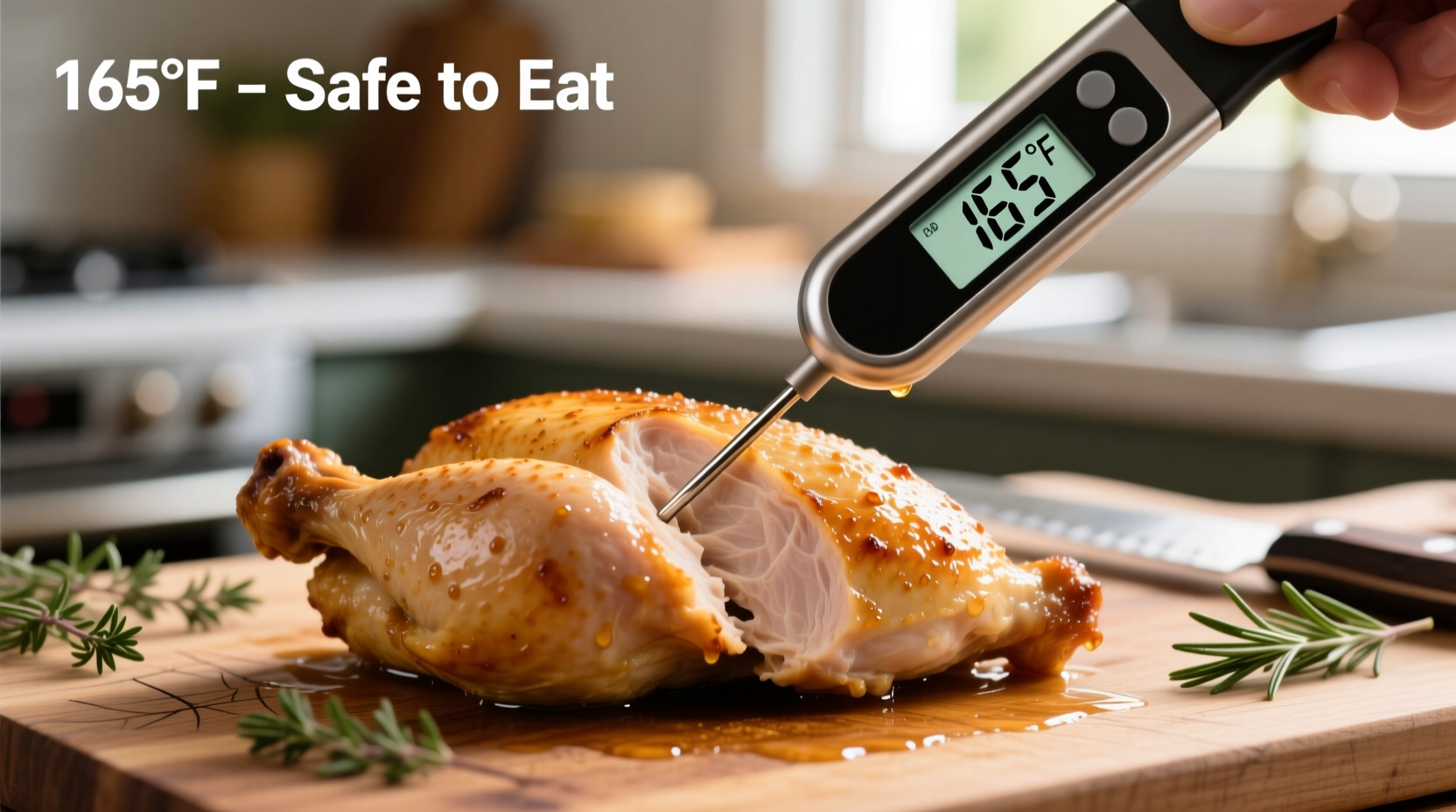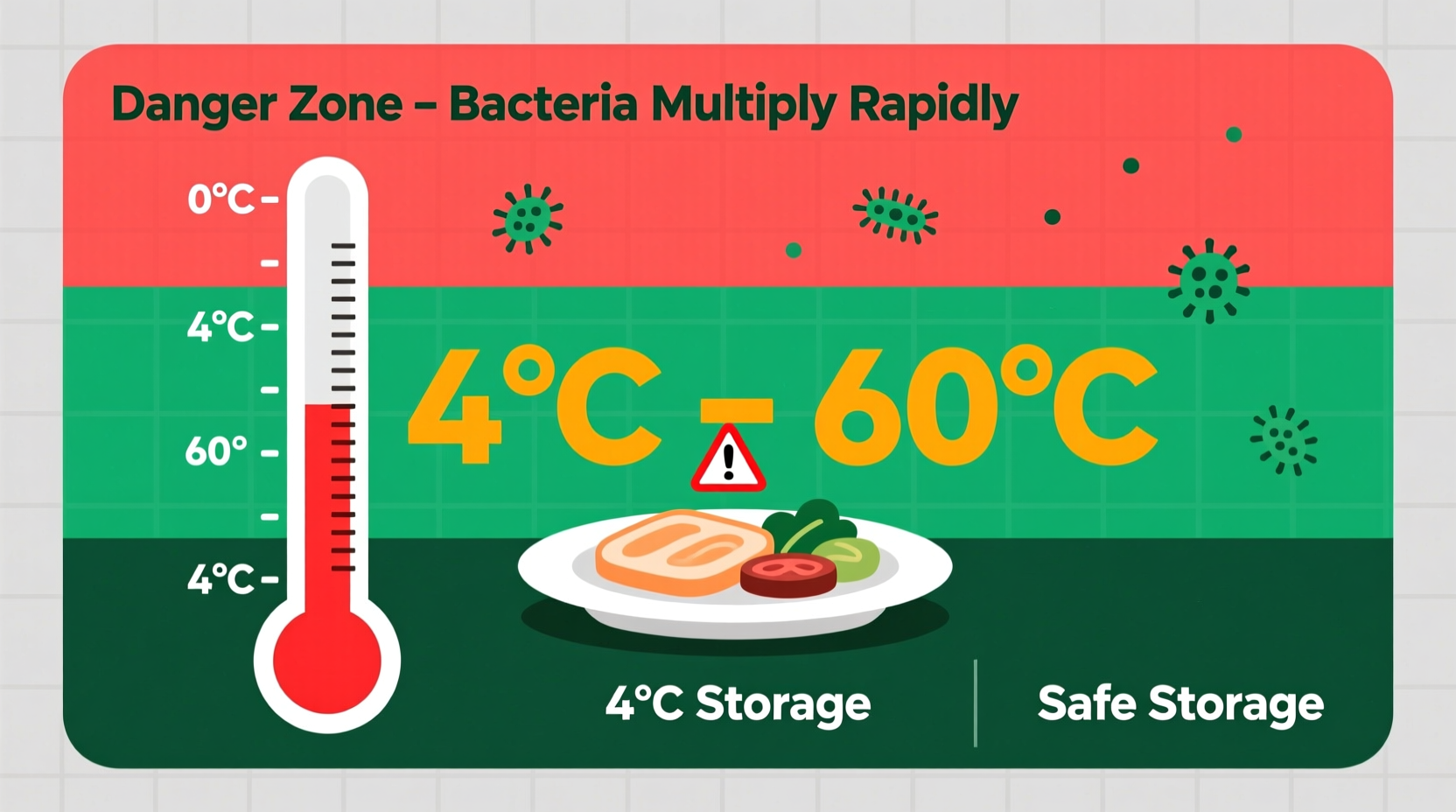Understanding and managing the food danger zone isn't just kitchen protocol—it's your first line of defense against foodborne illness. Every year, millions suffer from preventable food poisoning because of improper temperature handling. This guide delivers actionable strategies to keep your food safe at every stage, from grocery shopping to leftovers storage.
Why the Food Danger Zone Matters: The Science Simplified
Bacteria like Salmonella, E. coli, and Listeria don't just exist in raw food—they reproduce exponentially within specific temperature ranges. When food sits between 40°F and 140°F, conditions become perfect for bacterial growth. In just 20 minutes, a single bacterium can multiply into millions. The USDA Food Safety and Inspection Service confirms that bacterial growth rates double with every 10°F increase within this range.

Critical Temperature Thresholds You Must Know
Not all foods behave the same within the danger zone. Different pathogens activate at varying temperatures, and specific foods require unique handling. Here's what the FDA Food Code specifies:
| Food Type | Minimum Safe Internal Temperature | Maximum Time in Danger Zone |
|---|---|---|
| Poultry (chicken, turkey) | 165°F (73.9°C) | 1-2 hours |
| Ground meats | 160°F (71.1°C) | 1-2 hours |
| Beef, pork, veal, lamb (steaks, roasts) | 145°F (62.8°C) + 3 min rest | 2 hours |
| Fish | 145°F (62.8°C) | 2 hours |
| Egg dishes | 160°F (71.1°C) | 1 hour |
Real-World Danger Zone Scenarios and Solutions
Temperature danger zones aren't just theoretical—they happen daily in homes and restaurants. Consider these common situations:
Grocery Shopping to Refrigeration Timeline
Many consumers don't realize that the clock starts ticking the moment perishables leave refrigeration. The USDA recommends:
- Complete grocery shopping within 45 minutes when temperatures exceed 90°F
- Store perishables within 2 hours of purchase (1 hour if ambient temperature is above 90°F)
- Use insulated bags for transport during warm weather
Buffet and Party Food Safety
At gatherings, food often sits out longer than recommended. Implement these safeguards:
- Divide large portions into smaller serving dishes to minimize temperature fluctuations
- Use chafing dishes with flame warmers (maintaining above 140°F) or ice beds (keeping below 40°F)
- Discard perishable items after 2 hours (1 hour in hot environments)
Advanced Temperature Management Strategies
Professional kitchens use techniques that home cooks can easily adopt:
The Two-Stage Cooling Method
For large quantities like soups or stews, rapid cooling prevents extended time in the danger zone. The FDA Food Code requires potentially hazardous foods to be cooled from 135°F to 70°F within 2 hours, then to 41°F or below within an additional 4 hours. Accomplish this by:
- Using ice water baths with frequent stirring
- Dividing food into shallow containers (no deeper than 2 inches)
- Stirring in ice as an ingredient (for soups and sauces)
Thermometer Verification Process
Did you know most home thermometers have a ±2°F margin of error? Verify accuracy monthly using:
- Ice water test (should read 32°F/0°C)
- Boiling water test (adjust for altitude—212°F/100°C at sea level)
Special Considerations for High-Risk Populations
Certain groups face greater risks from foodborne pathogens. The CDC reports that older adults, pregnant women, young children, and immunocompromised individuals account for 70% of severe foodborne illness cases. For these populations:
- Reduce maximum danger zone exposure to 1 hour
- Avoid raw or undercooked eggs, meats, and seafood entirely
- Refrigerate leftovers within 30 minutes of cooking
Temperature Danger Zone Myths Debunked
Several common misconceptions persist about food safety temperatures:
- Myth: "If it smells fine, it's safe to eat." Fact: Pathogenic bacteria often don't produce noticeable odors.
- Myth: "Bacteria are killed during cooking if food looks done." Fact: Visual cues are unreliable—always use a thermometer.
- Myth: "The danger zone only applies to meat." Fact: All perishable foods including cooked vegetables, dairy, and prepared dishes are vulnerable.
Essential Food Safety Tools for Home Kitchens
Investing in these tools significantly reduces danger zone risks:
- Digital instant-read thermometer (calibrated annually)
- Refrigerator/freezer thermometer (monitors actual appliance temperature)
- Timer system for tracking food exposure times
- Insulated food carriers for transportation
When Food Safety Regulations Changed: A Timeline
Food safety standards have evolved significantly:
- 1993: USDA established the original danger zone range (40°F-140°F)
- 2001: FDA Food Code updated cooling requirements to two-stage process
- 2013: Temperature threshold for eggs raised from 145°F to 160°F
- 2020: USDA clarified time limits for ambient temperatures above 90°F
Practical Implementation Checklist
Make food safety routine with this daily checklist:
- Morning: Verify refrigerator temperature (below 40°F)
- Grocery trip: Use insulated bags and shop for perishables last
- After shopping: Store perishables within 2 hours
- During cooking: Check internal temperatures with calibrated thermometer
- Serving: Keep hot foods above 140°F and cold foods below 40°F
- Leftovers: Refrigerate within 2 hours, use within 3-4 days











 浙公网安备
33010002000092号
浙公网安备
33010002000092号 浙B2-20120091-4
浙B2-20120091-4